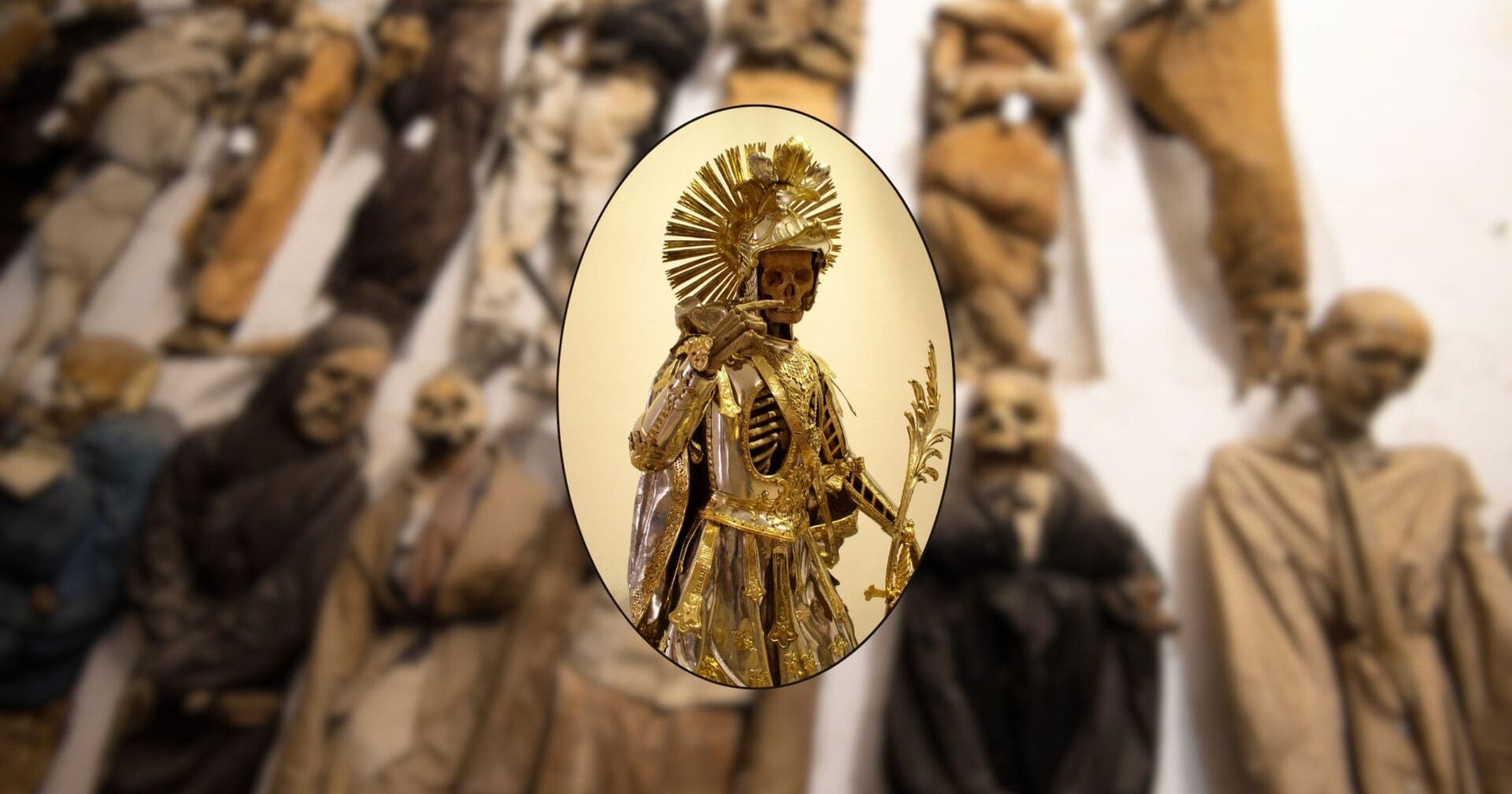A unique collection of relics holds a special place in the heart of certain Catholic churches all over the world: the Catacomb saints. What makes these relics special, you might ask?
These relics, adorned with jewels and rich fabrics, have a fascinating history that dates back to the early days of the Church. Discovered in the Roman catacombs in 1578, these ancient skeletons were believed to be the remains of early Christian martyrs.
During the Protestant Reformation, many Catholic churches were stripped of their sacred relics. In response, the Catholic Church, guided by the Council of Trent, sought to replenish these lost treasures. The catacombs offered a providential solution, providing a new source of relics at a time when they were desperately needed.
Identified sometimes by mere symbols or initials, these remains were given new names and honored as saints. Some were named after virtues or popular saints, honoring the reverence and devotion they inspired.
Churches across Germany, Austria, and Switzerland and abroad became home to these sanctified remains, each piece meticulously decorated to reflect its sacred status. They were known to command deep respect and piety. There were even nuns who specialized in working with the relics of Catacomb saints and performed extensive reconstruction work on them!
As knowledge of their origins grew, the veneration of some Catacomb saints waned. Yet, a number of them still grace churches today, standing as majestic testimonies to a time when the Catholic Church mobilized to preserve its sacred heritage amid religious upheaval.
Their journey from the ancient Roman catacombs to churches across Europe and the world is a remarkable story of the Church’s tradition to venerating saints and martyrs!
Photo credit: Dbu via Wikimedia Commons | Adwo / Shutterstock.com



















